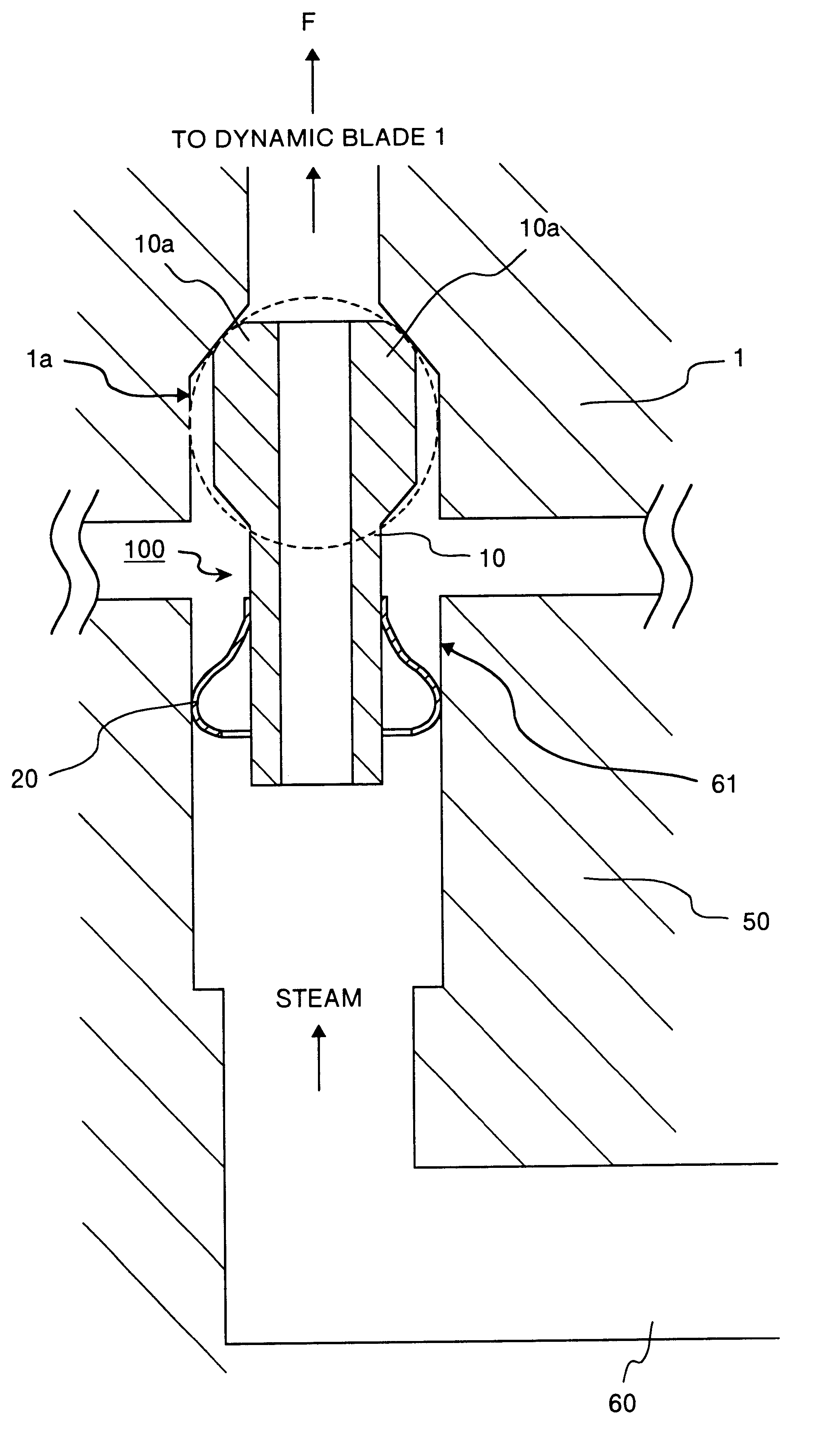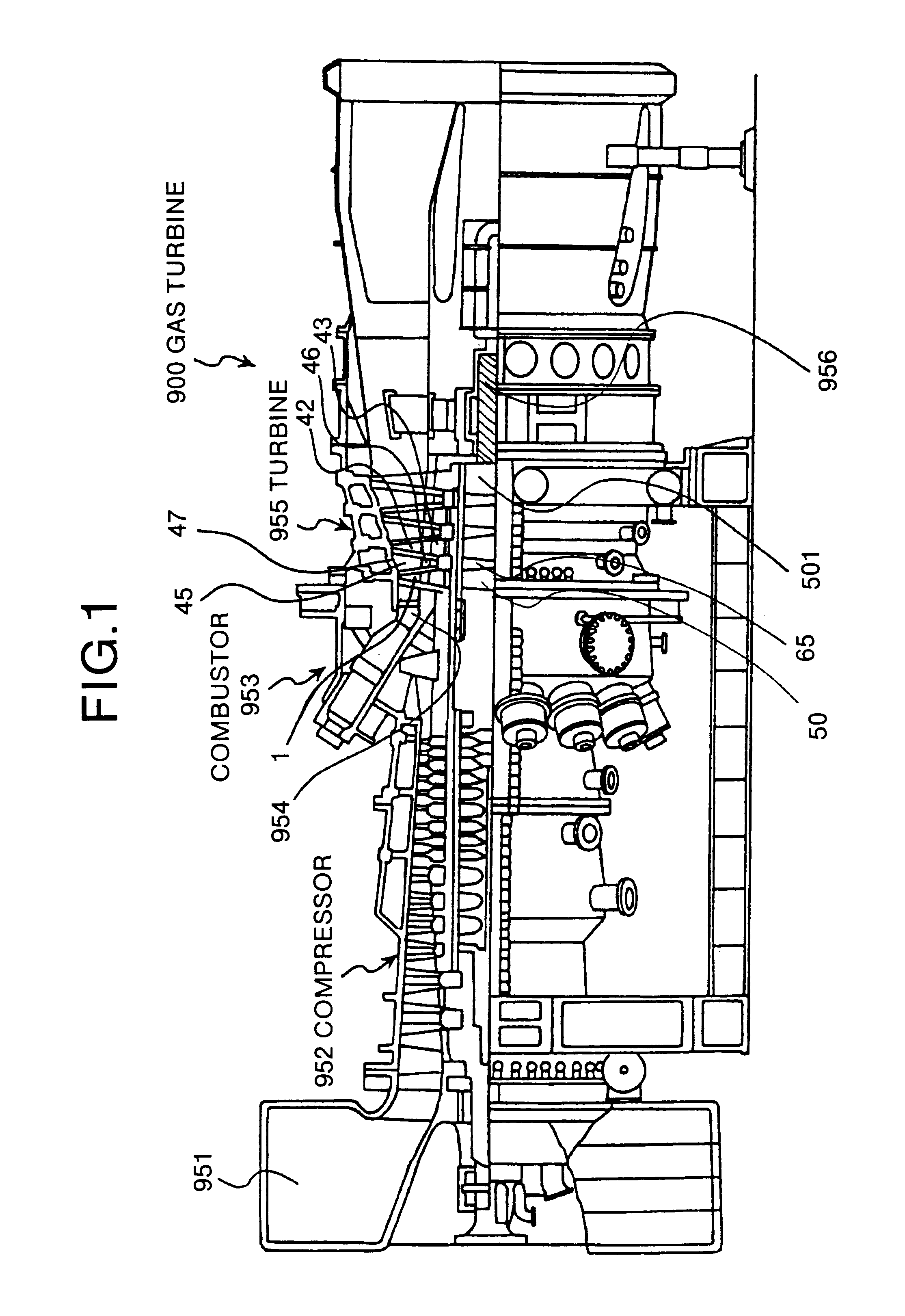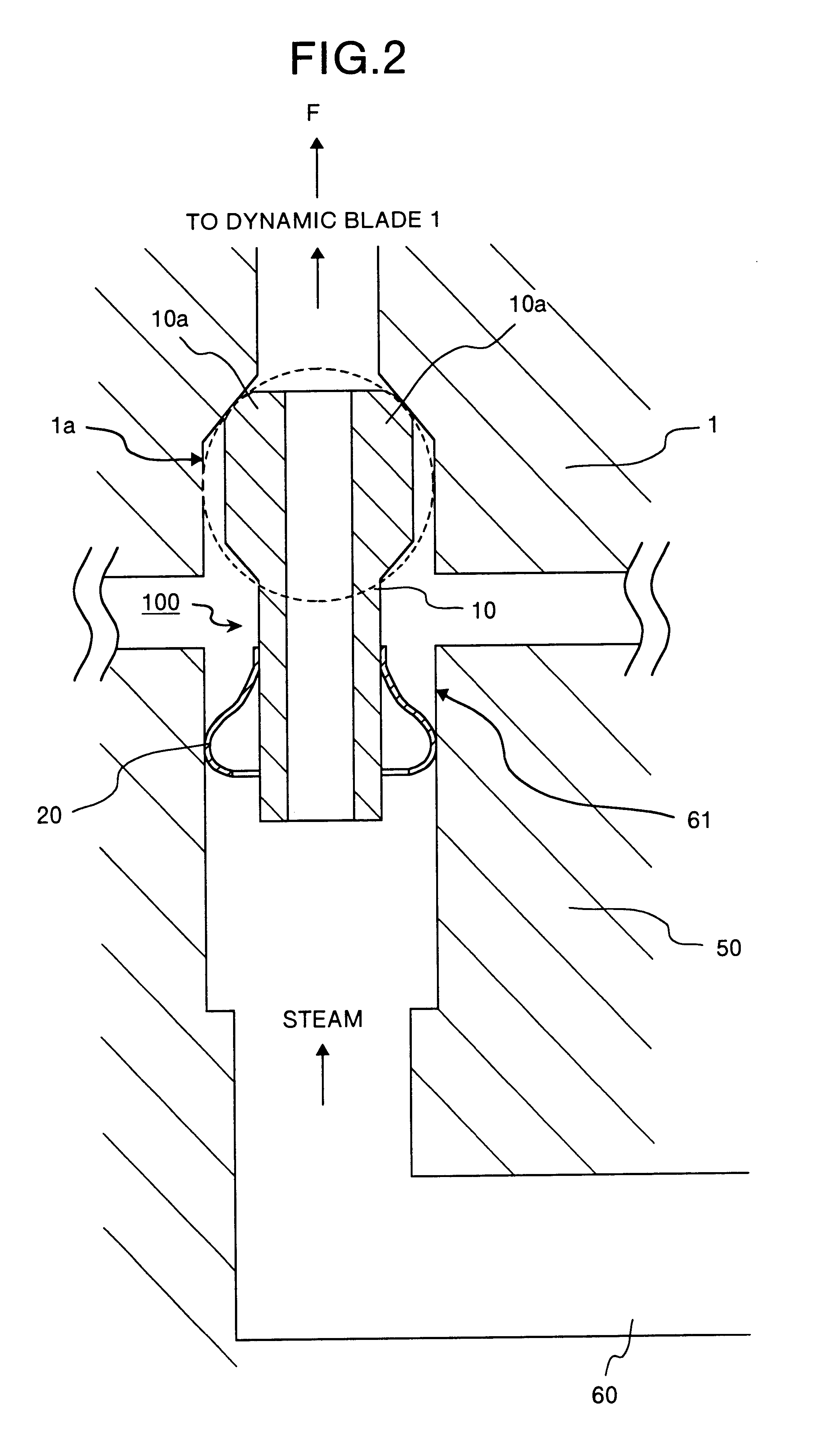Joint structure of coolant passage, tube seal, and gas turbine
a joint structure and coolant passage technology, applied in the field of gas turbines, can solve the problems of small steam leakage, difficult to increase the machining accuracy of the face, and decrease the work that can be taken out of the turbin
- Summary
- Abstract
- Description
- Claims
- Application Information
AI Technical Summary
Benefits of technology
Problems solved by technology
Method used
Image
Examples
first embodiment
FIG. 1 is an explanatory diagram which shows a gas turbine according to this invention. The gas turbine 900 cools high-temperature members in the gas turbine, such as a dynamic blade, a rotor desk or a stationary blade, by steam. The air taken in from an air intake 951 is compressed by a compressor 952, to become high-temperature and high-pressure compressed air, and is fed to a combustor 953. In the combustor 953, a gas fuel such as a natural gas or a liquid fuel such as light fuel oil or light heavy fuel oil is supplied to the compressed air to burn the fuel, to thereby generate a high-temperature and high-pressure combustion gas. This high-temperature and high-pressure combustion gas is guided to a tail pipe 954 of the combustor, and injected to a turbine 955.
The stationary blade and the dynamic blade of the turbine 955 are cooled by steam. The steam that cools the dynamic blade 1 is supplied through a steam supply flow passage (not shown) provided in a main spindle 956 of the tu...
second embodiment
FIG. 5 is a cross section which shows a joint structure of a cooling passage, which supplies cooling steam from the rotor disk side to the dynamic blade side or recovers it from the dynamic blade side to the rotor disk side, according to this invention. This joint structure is applicable when the shift between the dynamic blade 1 and the rotor disk 50 is small. When the dynamic blade 1 is shifted, a protruding portion 32 provided in a barrel 12 of a tube seal 101 abuts against an opening end 61a of a steam supply pipe outlet 61 provided in the rotor disk 50, to restrict this shift.
In this joint structure, a tube seal 104 having a tubular barrel 12 is used, and a curved surface is provided on the outer periphery of an end 12a of the barrel 12, so that this curved surface abuts against the internal surface of a steam supply port 1a in the dynamic blade 1. A protruding portion 32 which restricts a radial movement of the tube seal 104 is fitted on the side of the barrel 12 and at a posi...
PUM
 Login to View More
Login to View More Abstract
Description
Claims
Application Information
 Login to View More
Login to View More - R&D
- Intellectual Property
- Life Sciences
- Materials
- Tech Scout
- Unparalleled Data Quality
- Higher Quality Content
- 60% Fewer Hallucinations
Browse by: Latest US Patents, China's latest patents, Technical Efficacy Thesaurus, Application Domain, Technology Topic, Popular Technical Reports.
© 2025 PatSnap. All rights reserved.Legal|Privacy policy|Modern Slavery Act Transparency Statement|Sitemap|About US| Contact US: help@patsnap.com



